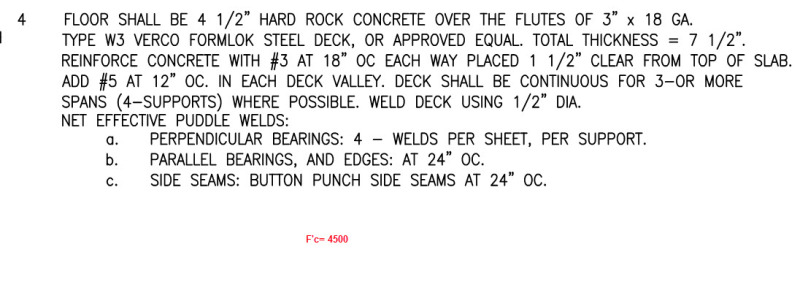FusionDan
Structural
- Apr 22, 2017
- 7
Looking at combining the composite slab reinforcing (3@18" 1" clr. from top of slab) with Flute Valley reinforcing (#5@12" in flute, 1" clr. from bottom) into a Larger Diameter Welded Wire Reinforcing. Been looking for reasons why the EOR has bar in the flute, can anyone help guide me as to the purpose of the bars in the flute, and why they can't be brought up into the slab. 7.5" slab total thickness w/ 3" decking and 4.5" slab.
Thank you in advance!
Thank you in advance!

